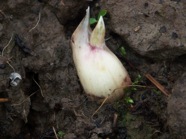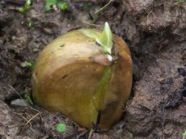
F-Gh
FAVA BEAN
Or broad bean (faba vulgaris /vigna faba). This was once one of the maincrops in many parts of Europe. The fava beans are grown for spring or early summer use, and therefore have to be sown quite early, some varieties are even winter hardy and stand quite severe frosts. The plants are fast growing, and grow to a height of 50 cms to over 1 metre, depending in the first place on the variety, and secondly on the circumstances. The pods are quickly formed and the fully grown beans are harvested from the ripe pods, and used steamed or boiled. Young beans can be harvested as well, they can be used fresh, but it takes quite a while before you get a decent harvest of these...
The main difficulty in growing this is the presence of the black aphids, who can destroy a sure harvest within a couple of days. I try to spray them off, using plain water (too much insecticides are used, even organic ones) , this usually works quite well, although I have to repeat this quite often.
FENNEL
Fennel has different forms, one form is the ‘old’ herb fennel, with mainly two different varieties, a green one and a bronze one. The other, newer form (and use) is derived from these herbs, and this one makes a nice, white , thick bulb which can be eaten as a main dish (boiled, raw, ...).
The bulbous varieties are best sown in mid-summer or even later, otherwise they tend to bolt (although some new varieties have come on the market , they can be sown earlier, but I have yet to try these out), they prefer a soil that has been fertilised the year before, and they are happier in wet conditions (mulching or permaculture is a good solution for this).
The ‘herb’ varieties are off course partly grown for their seeds, so it’s perfectly OK if these are sown early. These varieties are perennial, I have some plants that are over 15 years old, and they do have a tendency to reseed a bit. They prefer some sunnier and warmer position compared to the bulbous varieties, but are otherwise easy to grow. The seeds, leaves or even roots can be used for flavouring all kinds of dishes, or you can make a perfect tea from the seeds...

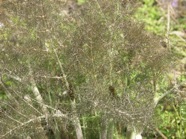
FENUGREEK
Fenugreek (trigonellla foenum-graecum) is a herb that should be used more... The plants are quite easy to grow, give them a good sunny spot and they will thrive. Just indicate where you have put them, because they are easily looked over...
The seeds are harvested when the pods are ripe (they change colours as an indication), and they are used in curries, tomato sauces,.... We can even buy fenugeek cheese over here, cheese with an addition of fenugreek seeds, very tasty!
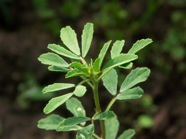
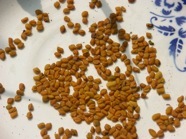
GARLIC
Garlic has ,surprisingly for many people, a great number of varieties. The well-known white or light-red garlic bulbs we usually buy over here are just the most common selections, many others can be grown out. There are hardneck varieties, they usually produce some small new garlics at the top of their stalks, available in red, purple and white (and perhaps other colours too). The other , most common garlic (allium sativum) is the softneck variety, they are more productive and they don’t have the small top-garlics the hardnecks have. Again diversity is enormous, available in white, yellow, red, pink,...
Garlic needs a long season to grow out well, so I plant them before winter (over here they are perfectly hardy), make sure they have the necessary nutritients, add a bit of lime to the ground to avoid white-rot, and protect them from insects if you have any of the annoying ones. They are usually harvested during midsummer..
A special one is the ‘rocambole’, this can be seen in the ‘allium’ page..
GHERKIN
